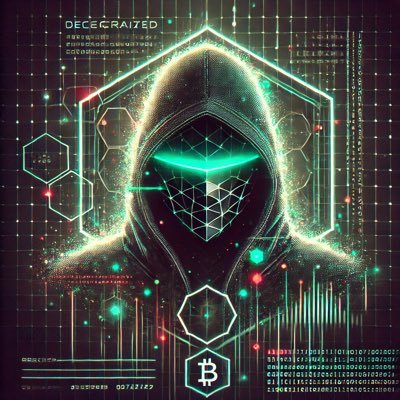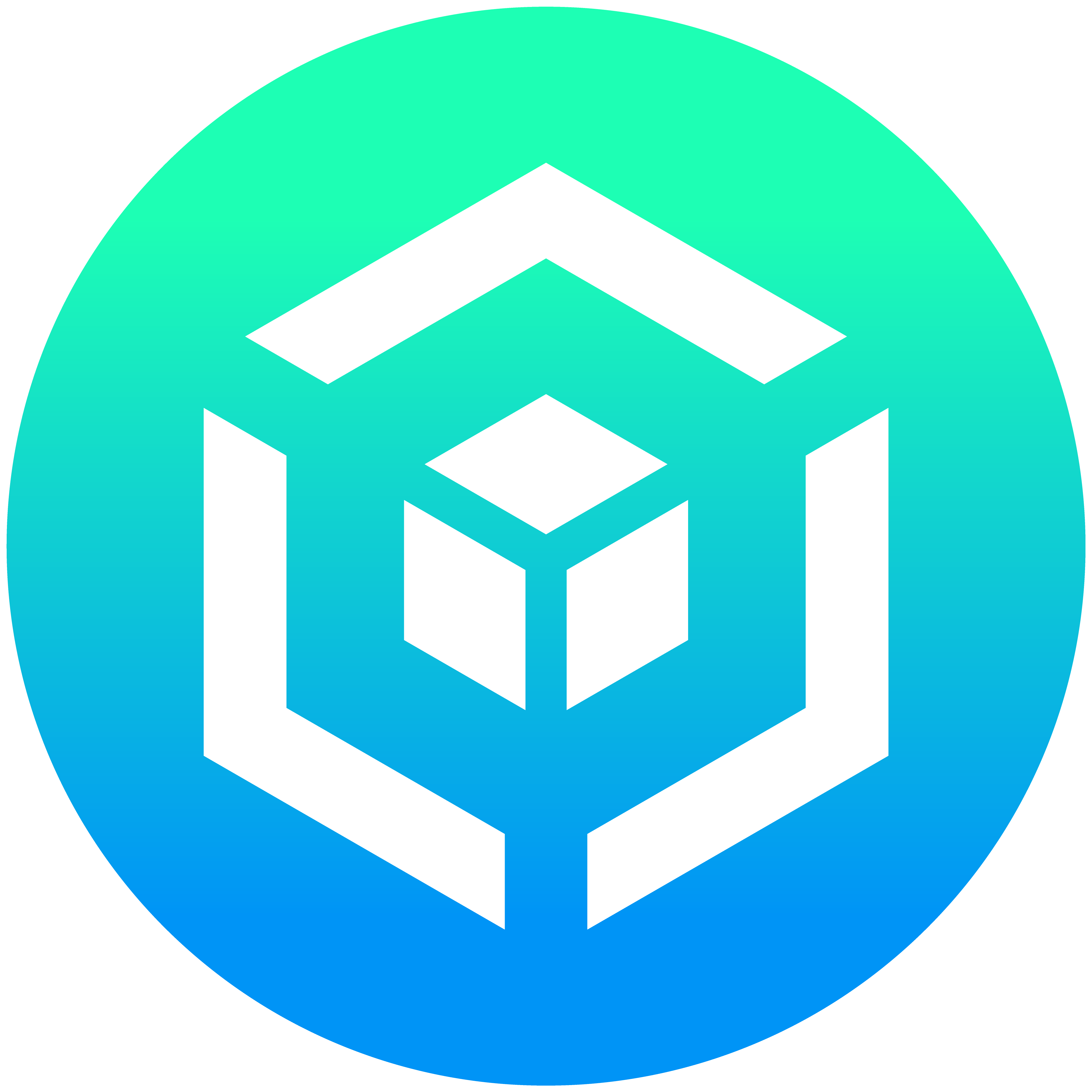Bitget: أعلى 4 من حيث حجم التداول اليومي العالمي!
الحصة السوقية لعملة البيتكوين BTC62.34%
إضافات جديدة على Bitget : Pi
BTC/USDT$104328.91 (+0.98%)مؤشر الخوف والطمع70(الطمع)
مؤشر موسم العملات المشفرة البديلة:0(موسم البيتكوين)
إجمالي صافي تدفق صناديق التداول الفوري للبيتكوين +$321.4M (يوم واحد)؛ +$2.02B (7 أيام).باقة هدية ترحيبية للمستخدمين الجدد بقيمة 6200 USDT.مطالبة الآن
تداول في أي وقتٍ وفي أي مكان باستخدام تطبيق Bitget. التنزيل الآن
Bitget: أعلى 4 من حيث حجم التداول اليومي العالمي!
الحصة السوقية لعملة البيتكوين BTC62.34%
إضافات جديدة على Bitget : Pi
BTC/USDT$104328.91 (+0.98%)مؤشر الخوف والطمع70(الطمع)
مؤشر موسم العملات المشفرة البديلة:0(موسم البيتكوين)
إجمالي صافي تدفق صناديق التداول الفوري للبيتكوين +$321.4M (يوم واحد)؛ +$2.02B (7 أيام).باقة هدية ترحيبية للمستخدمين الجدد بقيمة 6200 USDT.مطالبة الآن
تداول في أي وقتٍ وفي أي مكان باستخدام تطبيق Bitget. التنزيل الآن
Bitget: أعلى 4 من حيث حجم التداول اليومي العالمي!
الحصة السوقية لعملة البيتكوين BTC62.34%
إضافات جديدة على Bitget : Pi
BTC/USDT$104328.91 (+0.98%)مؤشر الخوف والطمع70(الطمع)
مؤشر موسم العملات المشفرة البديلة:0(موسم البيتكوين)
إجمالي صافي تدفق صناديق التداول الفوري للبيتكوين +$321.4M (يوم واحد)؛ +$2.02B (7 أيام).باقة هدية ترحيبية للمستخدمين الجدد بقيمة 6200 USDT.مطالبة الآن
تداول في أي وقتٍ وفي أي مكان باستخدام تطبيق Bitget. التنزيل الآن



سعر OneFinityONE
غير مدرجة
عملة عرض السعر:
EGP
يتم الحصول على البيانات من مزودي الجهة الخارجية. ولا تتبنى هذه الصفحة والمعلومات المقدمة أي عملة مشفرة مُحددة. هل تريد تداول العملات المدرجة؟ انقر هنا
EGP3.4%3.10+1D
مخطط الأسعار
مخطط أسعار OneFinity (ONE/EGP)
آخر تحديث بتاريخ 2025-05-11 15:42:21(UTC+0)
القيمة السوقية:EGP14,866,335.39
القيمة السوقية المخفضة بالكامل:EGP14,866,335.39
الحجم (24 ساعة):EGP4,619.58
الحجم في 24 ساعة / حد التوفر السوقي:%0.03
الارتفاع في 24 س:EGP3.57
الانخفاض في 24 س:EGP3.29
أعلى مستوى على الإطلاق:EGP43.53
أدنى مستوى على الإطلاق:EGP1.69
حجم التوفر المتداول:4,371,636 ONE
Total supply:
25,543,088ONE
معدل التداول:%17.00
Max supply:
25,546,534ONE
السعر بعملة البيتكوين:0.{6}6441 BTC
السعر بعملة ETH:0.{4}2702 ETH
السعر بحد التوفر السوقي لعملة BTC:
EGP23,990,862.98
السعر بحد التوفر السوقي لعملة ETH:
EGP3,475,819.97
العقود:
ONE-f9...-f9954f(Elrond)
ما رأيك في OneFinity اليوم؟
ملاحظة: هذه المعلومات هي للإشارة فقط.
تقرير تحليل الذكاء الاصطناعي حول OneFinity
أبرز أحداث سوق العملات المشفرة اليومعرض التقرير
سعر OneFinity الحالي اليوم بعملة EGP
سعر OneFinity المباشر اليوم هو 3.4EGPEGP، مع قيمة سوقية حالية تبلغ 14.87MEGP. ارتفع سعر OneFinity بنسبة 3.10%خلال الـ 24 ساعة الماضية، وحجم التداول على مدار 24 ساعة هو4,619.58EGP. يتم تحديث معدل التحويلONE/EGP(OneFinityإلىEGP) في الوقت الفعلي.
سجل أسعار عملة OneFinity (EGP)
سعر OneFinity بلغ %80.00- خلال العام الماضي. كان أعلى سعر لعملة بعملة EGP في العام الماضي EGP20.37 وأدنى سعر لـ بعملة EGP في العام الماضي EGP1.69.
الوقتالسعر/التغيير أقل سعر
أقل سعر أعلى سعر
أعلى سعر 
 أقل سعر
أقل سعر أعلى سعر
أعلى سعر 
24h%3.10+EGP3.29EGP3.57
7d%33.50+EGP2.31EGP3.59
30d%59.86+EGP1.84EGP3.59
90d%15.11-EGP1.69EGP4.34
1y%80.00-EGP1.69EGP20.37
طوال الوقت%23.00-EGP1.69(2025-04-07, منذ 34 يوم (أيام) )EGP43.53(2024-03-14, منذ 1 سنة (سنوات) )
ما هو أعلى سعر لعملة OneFinity؟
تم تسجيل أعلى مستوى على الإطلاق لسعر OneFinity في EGP حيث كانت 43.53EGP، وسُجلت في 2024-03-14. بالمقارنة مع أعلى مستوى على الإطلاق لعملة OneFinityحيث انخفض سعر OneFinity الحالي بنسبة 92.19%.
ما أعلى سعر لعملة OneFinity؟
تم تسجيل أدنى مستوى على الإطلاق لسعر OneFinity في EGP حيث كانت 1.69EGP، وسُجلت في 2025-04-07. بالمقارنة مع أدنى مستوى على الإطلاق لعملة OneFinityحيث ارتفع سعر OneFinity الحالي بنسبة 101.62%.
التنبؤ بسعر OneFinity
متى يكون الوقت المناسب لشراء ONE؟ هل يجب أن أشتري أو أبيع ONE الآن؟
عند اتخاذ قرار شراء أو بيع ONE، يجب عليك أولاً التفكير في استراتيجية التداول الخاصة بك. سيكون نشاط التداول للمتداولين على المدى الطويل والمتداولين على المدى القصير مختلفًا أيضًا. وقد يوفر لك تحليل Bitget الفني لعملة ONE مرجعًا للتداول.
وفقًا لـ تحليل فني لمدة 4 ساعات لعملة ONE، فإن إشارة التداول هي شراء قوي.
وفقًا لـ تحليل فني لمدة يوم لعملة ONE، فإن إشارة التداول هي شراء قوي.
وفقًا لـ تحليل فني لمدة أسبوع لعملة ONE، فإن إشارة التداول هي بيع.
ماذا سيكون سعر ONE في 2026؟
استنادًا إلى نموذج التنبؤ بأداء السعر التاريخي لـ ONE، من المتوقع أن يصل سعر ONE إلى EGP4.34 في 2026.
ماذا سيكون سعر ONE في 2031؟
في 2031، من المتوقع أن يرتفع سعر ONE بمقدار %39.00+. بحلول نهاية 2031، من المتوقع أن يصل سعر ONE إلى EGP8.09، مع عائد استثمار تراكمي قدره %126.70+.
الأسئلة الشائعة
ما السعر الحالي لـ OneFinity؟
السعر المباشر لعملة OneFinity هو EGP3.4 لكل (ONE/EGP) مع حد سوقي حالي قدره EGP14,866,335.39 EGP. تشهد قيمة عملة OneFinity لتقلبات متكررة بسبب النشاط المستمر على مدار الساعة طوال أيام الأسبوع (24/7) في سوق العملات المشفرة. تُتاح بيانات السعر الحالي في الوقت الفعلي لعملة OneFinity وبياناته السابقة على Bitget.
ما حجم تداول OneFinity على مدار 24 ساعة؟
خلال الـ 24 ساعة الماضية، حجم تداول OneFinity بلغ 4,619.58EGP.
ما أعلى مستوى على الإطلاق لـ OneFinity؟
أعلى مستوى على الإطلاق لـ OneFinity هو 43.53EGP. هذا أعلى سعر على الإطلاق لـ OneFinity منذ الإصدار.
هل يمكنني شراء OneFinity على منصة Bitget؟
نعم، يتوفر OneFinity حاليًا على منصة Bitget المركزية. للحصول على إرشادات أكثر تفصيلاً، راجع دليل كيفية شراء الخاص بنا المفيد.
هل يمكنني تحقيق دخل ثابت من الاستثمار في OneFinity؟
بالطبع، توفر Bitget منصة تداول استراتيجية، مع برامج تداول آلية ذكية لتشغيل عمليات التداول آليًا وتحقيق الأرباح.
أين يمكنني شراء OneFinity بأقل رسوم؟
يسعدنا أن نعلن أن منصة تداول استراتيجية متاح الآن في منصة تداول Bitget. تقدم Bitget واحدة من أفضل رسوم التداول في المجال وتفاصيل لضمان استثمارات مربحة للمتداولين.
OneFinity المقتنيات حسب التركيز
كبار المتداولين
المستثمرون
البيع بالتجزئة
OneFinity من العناوين حسب الوقت المحتفظ به
المالكون
الطرود
المتداولون
مخطط أسعار مباشر لأسعار coinInfo.name (12)

أسعار OneFinity العالمية
كم تبلغ قيمة OneFinityالآن بعملات أخرى؟ آخر تحديث: 2025-05-11 15:42:21(UTC+0)
ONE إلى MXN
Mexican Peso
Mex$1.31ONE إلى GTQGuatemalan Quetzal
Q0.52ONE إلى CLPChilean Peso
CLP$62.83ONE إلى HNLHonduran Lempira
L1.75ONE إلى UGXUgandan Shilling
Sh246.59ONE إلى ZARSouth African Rand
R1.22ONE إلى TNDTunisian Dinar
د.ت0.2ONE إلى IQDIraqi Dinar
ع.د88.3ONE إلى TWDNew Taiwan Dollar
NT$2.03ONE إلى RSDSerbian Dinar
дин.6.95ONE إلى DOPDominican Peso
RD$3.95ONE إلى MYRMalaysian Ringgit
RM0.29ONE إلى GELGeorgian Lari
₾0.18ONE إلى UYUUruguayan Peso
$2.81ONE إلى MADMoroccan Dirham
د.م.0.62ONE إلى OMROmani Rial
ر.ع.0.03ONE إلى AZNAzerbaijani Manat
₼0.11ONE إلى KESKenyan Shilling
Sh8.69ONE إلى SEKSwedish Krona
kr0.65ONE إلى UAHUkrainian Hryvnia
₴2.8- 1
- 2
- 3
- 4
- 5
إضافات جديدة على Bitget
إضافات جديدة
شراء المزيد
أين يمكنني شراء العملات المشفرة؟
شراء العملات المشفرة على تطبيق Bitget
سجّل الاشتراك خلال دقائق لشراء العملات المشفرة عبر بطاقة الائتمان أو التحويل المصرفي.
قسم الفيديو - التحقق السريع والتداول السريع!

كيفية إكمال التحقق من الهوّية على Bitget وحماية نفسك من عمليات الاحتيال
1. يُرجى تسجيل الدخول إلى حسابك في Bitget.
2. إذا كنت مستخدمًا جديدًا لمنصة Bitget، شاهد الشرح التفصيلي الخاص بنا حول كيفية إنشاء حساب.
3. مرر مؤشر الماوس فوق رمز الملف الشخصي الخاص بك، وانقر على «لم يتم التحقق منه»، واضغط على «تحقق».
4. اختر بلد الإصدار أو المنطقة ونوع الهوّية، واتبع التعليمات.
5. حدد «التحقق عبر الجوّال» أو «الكمبيوتر الشخصي» بناءً على تفضيلاتك.
6. أدخل بياناتك وأرسل نسخة من هويتك، والتقط صورة ذاتية.
7. أرسل طلبك، وبهذا تكون قد أكملت التحقق من الهوية!
استثمارات العملات المشفرة، بما في ذلك شراء OneFinity عبر الإنترنت عبر منصة Bitget، عرضة لمخاطر السوق. توفر لك منصة Bitget طرقًا سهلة ومريحة لشراء OneFinity، ونبذل قصارى جهدنا لإبلاغ مستخدمينا بشكل كامل بكل عملة مشفرة نقدمها على منصة التداول. ومع ذلك، فإننا لا نتحمل أي مسؤولية للنتائج التي قد تنشأ عن عملية شراء OneFinity. لا تُعد هذه الصفحة وأي معلومات متضمنة تحيزًا لأي عملة مشفرة معينة.
OneFinity من التقييمات
متوسط التقييمات من المجتمع
4.6
يُستخدم هذا المحتوى للأغراض المعلوماتية فقط.
رؤى Bitget

mox
7ساعة
The 60th birthday is now the most common in Germany.
This single fact says everything about where our society is heading: an aging population, a shrinking workforce, and a pension system under enormous strain. In 1950, six workers funded the pension of one retiree. Today? Just
SIX%0.71-
ONE%4.07-

WEB3-TREASURE-ZON
7ساعة
IS PI NETWORK ABOUT TO PUMP? GET READY FOR THE RISE!
The long wait might finally be over — PI NETWORK is showing serious signs of life, and believers all over the world are buzzing with excitement!
Pi, once called “just a phone app,” is now getting ready to shock the crypto world!
WHY PI MIGHT BE THE NEXT BIG THING:
✅ Massive Global Community — Over 47 million pioneers worldwide! 🌍
✅ Utility-Based Ecosystem — Real apps, services & businesses built on Pi! 🛒🧾
✅ Decentralization at Heart — Fair mining for everyone via mobile phone! 📱🔒
✅ Mainnet Launch Incoming — Strong signals that open mainnet is near! 🧑💻🚀
As exchanges quietly start listing test prices and the team hints at upcoming mainnet features, whispers of a potential price recovery are growing louder. Some Pi believers are even predicting a future price above $10, $50, or more once full utility and listings roll in! 📈👀
Remember this:
> "If you missed Bitcoin early, don’t sleep on Pi."
"The Pi you mined for free could change your life one day!"
ARE YOU STILL HOLDING YOUR PI?
It’s not just an app — it’s a movement powered by belief, patience, and a powerful community.
Hold tight. Stay strong. The Pi pump might just be around the corner.
✨🔐📲💎🚀
#PiNetwork #PiIsComing #CryptoFuture #NextBigThing #HoldPiStrong
BITCOIN%6.81-
MOBILE%5.24-
BGUSER-8SLTXCVR
7ساعة
#SHM
SHM is the native cryptocurrency token of the Shardeum network, a blockchain platform designed to address scalability and decentralization challenges in the blockchain space. Shardeum employs a unique approach called dynamic state sharding, which allows the network to scale dynamically based on demand, ensuring low gas fees and high transaction throughput.
### Key Features and Use Cases of SHM Token:
1. **Dynamic State Sharding**: Shardeum's dynamic state sharding technology enables the network to adjust the number of shards based on network load, ensuring efficient transaction processing and scalability.
2. **Low Gas Fees**: By leveraging dynamic state sharding, Shardeum aims to provide low gas fees, making it an attractive option for decentralized applications (DApps) and users.
3. **Decentralization**: Shardeum focuses on achieving true decentralization, allowing anyone with minimal hardware to become a validator and participate in network security and transaction validation.
4. **Tokenomics**: SHM follows a dynamic supply model, similar to leading Layer 1 blockchains like Ethereum. The initial supply of SHM was set at 249 million tokens, with allocations for the foundation, team, sales, and ecosystem development.
5. **Token Sale and Mainnet Launch**: Shardeum conducted a token sale for SHM, which ran from March 19, 2025, to May 4, 2025, just before the mainnet launch on May 5, 2025. The token sale offered early access to SHM at favorable pricing.
6. **Trading and Exchanges**: SHM tokens are traded on various centralized cryptocurrency exchanges, with Bitget being one of the most popular platforms for trading SHM/USDT pairs.
7. **Investment Potential**: SHM tokens have gained attention in the cryptocurrency market for their investment potential, particularly due to Shardeum's innovative technology and focus on scalability and decentralization.
### Conclusion:
SHM token represents a significant development in the blockchain space, offering a scalable, decentralized, and low-cost solution for DApps and users. With its dynamic state sharding technology and focus on decentralization, Shardeum aims to address key challenges in the blockchain industry and provide a robust platform for the future of decentralized applications.$SHM
GAS%2.36+
ANYONE%9.86-
BGUSER-8SLTXCVR
7ساعة
# OBOL: Redefining Staking Security Through Distributed Validator Technology
## Introduction
OBOL represents a paradigm shift in blockchain staking infrastructure, pioneering a technology known as Distributed Validator Technology (DVT) that fundamentally transforms how validators secure proof-of-stake networks. As Ethereum and other major blockchains have transitioned to proof-of-stake consensus mechanisms, the need for resilient, secure, and decentralized validation infrastructure has become increasingly critical. OBOL addresses these challenges through an innovative approach that distributes validator responsibilities across multiple independent operators, enhancing security, reliability, and decentralization in the staking ecosystem. This comprehensive analysis explores OBOL's technological architecture, ecosystem components, and potential impact on the future of blockchain infrastructure.
## The Validator Security Challenge
To appreciate OBOL's significance, one must first understand the fundamental challenges in traditional validator setups:
### Single Points of Failure
Conventional validators operate on single machines with single private keys, creating vulnerability to:
- Hardware failures causing downtime and slashing penalties
- Network outages leading to missed attestations
- Security breaches that could compromise validator keys
- Geographic and infrastructure risks
### Centralization Pressures
Economic and technical factors push staking toward centralization:
- Economies of scale favoring large institutional operators
- Technical complexity creating barriers for individual participation
- Risk management challenges for smaller operators
- Limited geographic diversity in node operation
### Key Management Risks
Validator key security presents significant challenges:
- Compromised keys can lead to catastrophic slashing events
- Backup strategies create additional security vulnerabilities
- Key rotation complexity limits operational flexibility
- Limited options for secure multi-party key management
## OBOL's Technical Architecture
OBOL has developed a comprehensive technical stack to address these challenges:
### Distributed Key Generation (DKG)
At the core of OBOL's innovation is a secure method for creating distributed validator keys:
- Validators are created through a multi-party computation ceremony
- No single party ever possesses the complete validator key
- Key shares are distributed among multiple independent operators
- Threshold signature schemes enable collaborative signing
### Charon Client
The primary software implementation enabling distributed validation:
- Acts as middleware between consensus and execution clients
- Coordinates message passing between distributed validator nodes
- Ensures synchronized consensus participation across the cluster
- Implements BFT-style consensus among validator nodes
### Middleware Network
A specialized communication infrastructure that enables:
- Secure and timely communication between distributed validator components
- Monitoring and performance analytics across validator clusters
- Network-wide coordination for optimal performance
- Cross-operator synchronization and timing guarantees
### Security Enhancements
OBOL implements several innovations to enhance validator security:
- Multi-factor authentication for validator operations
- Geographic distribution requirements for enhanced resilience
- Automated monitoring and alert systems
- Slashing protection mechanisms
## The OBOL Protocol
The OBOL ecosystem operates through a comprehensive protocol that governs distributed validator operation:
### Validator Clusters
The fundamental operational units within the OBOL ecosystem:
- Groups of 4-16 independent nodes operating as a single validator
- Configured with custom threshold requirements for signing operations
- Can span multiple operators, jurisdictions, and infrastructure providers
- Maintain synchronized state through the Charon middleware
### Cluster Configuration Options
OBOL enables flexible validation setups:
- **Solo Clusters**: Individual operators running multiple nodes for self-redundancy
- **Trusted Clusters**: Known participants collaborating on validation
- **Permissionless Clusters**: Open participation through economic staking requirements
- **Institutional Clusters**: Enterprise-grade setups with enhanced security requirements
### Performance Optimization
The protocol implements several mechanisms to ensure optimal validator performance:
- Latency-aware communication protocols
- Leader selection algorithms to minimize communication overhead
- Fallback mechanisms for node failures
- Graduated consensus thresholds based on network conditions
### Economic Security
OBOL aligns economic incentives for distributed validation:
- Staking requirements for middleware operators
- Performance-based reward distribution
- Slashing conditions for protocol violations
- Reputation systems for operator selection
## The OBOL Ecosystem
The OBOL protocol supports a comprehensive ecosystem of participants and services:
### Validator Operators
Individual and institutional stakers who leverage DVT to enhance the security and reliability of their validation operations, including:
- Individual ETH stakers seeking enhanced security
- Institutional staking providers managing customer assets
- DAOs distributing validator control across their membership
- Protocol treasuries securing their staked assets
### Middleware Operators
Specialized service providers maintaining the infrastructure required for seamless communication between distributed validator components:
- Running communication relays for distributed validator clusters
- Providing performance monitoring and alerting services
- Supporting discovery mechanisms for cluster formation
- Operating specialized hardware for optimized signature aggregation
### Technology Integrators
Service providers incorporating OBOL's DVT protocol into their offerings:
- Staking-as-a-service platforms
- Hardware security module manufacturers
- Wallet providers offering staking services
- Node operation platforms and infrastructure providers
### Developer Community
Technical contributors building tools, interfaces, and integrations that extend the capabilities of the OBOL network:
- Creating user interfaces for distributed validator management
- Developing monitoring and analytics tools
- Building middleware extensions for specialized use cases
- Creating educational resources and implementation guides
## Implementation and Deployment
OBOL's technology has been deployed across several phases:
### Testnet Implementations
The protocol has undergone extensive testing through:
- Multiple testnet iterations with increasing complexity
- Simulated fault scenarios to test resilience
- Performance benchmarking under various network conditions
- Security audits from multiple independent firms
### Mainnet Deployment
OBOL's production implementation follows a staged approach:
- Initial deployment with limited validator clusters
- Gradual expansion to more operators and validator types
- Integration with major staking services
- Support for additional proof-of-stake networks beyond Ethereum
### Integration Partners
OBOL has established partnerships with key ecosystem participants:
- Major staking providers implementing DVT for customer assets
- Hardware security module manufacturers supporting distributed key shares
- Infrastructure providers offering OBOL-compatible node setups
- Development teams building complementary staking infrastructure
## Impact on the Staking Ecosystem
OBOL's distributed validator technology has far-reaching implications:
### Enhanced Security
DVT fundamentally improves staking security through:
- Elimination of single points of failure in validator operation
- Distribution of risk across multiple independent operators
- Improved resilience against hardware and network failures
- Enhanced protection against sophisticated attacks
### Increased Decentralization
The technology enables greater decentralization by:
- Lowering the risk threshold for individual participants
- Enabling collaborative validation across jurisdictions
- Creating new models for community-based validation
- Reducing the advantage of large-scale centralized operations
### Institutional Adoption
DVT addresses key concerns for institutional participation:
- Meets enterprise-grade security requirements
- Enables separation of duties for regulatory compliance
- Provides redundancy guarantees required by financial institutions
- Supports sophisticated key management policies
### Network Health Improvements
The broader network benefits from:
- More geographically distributed validation
- Higher aggregate uptime across validators
- Reduced correlation of failures during network stress
- More participants in the validation ecosystem
## Future Development Roadmap
OBOL's future development focuses on several key areas:
### Cross-Chain Expansion
Extending DVT beyond Ethereum to other proof-of-stake networks:
- Adapting the protocol for different consensus mechanisms
- Creating a universal standard for distributed validation
- Building cross-chain validator management tools
- Enabling validators to secure multiple networks simultaneously
### Enhanced Security Features
Continuing innovations in validation security:
- Implementation of post-quantum cryptographic techniques
- Advanced threat detection and prevention mechanisms
- Automated security response systems
- Enhanced privacy for validator operations
### Governance and Decentralization
Evolving the protocol's governance model:
- Transitioning to community-driven development
- Implementing on-chain governance mechanisms
- Creating incentive structures for ecosystem contributors
- Developing standards for distributed validator operation
### Advanced Operational Tools
Building sophisticated tooling for validator operators:
- Comprehensive analytics dashboards
- Performance optimization suggestions
- Automated cluster management
- Advanced monitoring and alerting systems
## Challenges and Considerations
Despite its promising approach, OBOL faces several challenges:
### Technical Complexity
The distributed nature of DVT introduces additional complexity:
- Coordination requirements increase operational overhead
- Latency considerations impact validator performance
- Implementation errors could affect multiple validators
- Testing and auditing distributed systems presents challenges
### Adoption Hurdles
The transition to distributed validation faces practical barriers:
- Existing validators may resist changing established setups
- Integration with current staking infrastructure requires effort
- Educational gaps limit understanding of DVT benefits
- Short-term operational changes may discourage migration
### Performance Optimizations
Maintaining competitive performance requires ongoing development:
- Minimizing additional latency from distribution
- Optimizing communication protocols for efficiency
- Balancing security with operational speed
- Adapting to evolving network requirements
### Regulatory Considerations
The evolving regulatory landscape presents challenges:
- Varying jurisdictional requirements for validator operation
- Questions around regulatory responsibility in distributed setups
- Compliance considerations for institutional operators
- Data privacy concerns across international boundaries
## Conclusion
OBOL represents a transformative approach to blockchain validation through its distributed validator technology. By addressing fundamental security and reliability challenges in staking infrastructure, OBOL has positioned itself as an essential component of the maturing proof-of-stake ecosystem. As blockchain networks increasingly form the foundation for critical financial infrastructure, solutions that enhance security and resilience while maintaining decentralization will prove invaluable.
For individual stakers, institutions, and the broader blockchain community, OBOL offers a path toward more secure, reliable, and truly decentralized validation—fulfilling the original promise of proof-of-stake consensus while addressing practical operational challenges. While the implementation of distributed validation represents a significant shift in operational practices, the enhanced security and reliability benefits make a compelling case for widespread adoption across the staking ecosystem.
As proof-of-stake networks continue to secure trillions in value and form the foundation of the decentralized economy, technologies like OBOL's DVT will likely transition from innovative options to industry standards—representing an important evolution in how we collectively secure and maintain blockchain networks.$OBOL
CORE%2.80-
OBOL%2.87+
Habibushoot
7ساعة
Altcoins 🔥
As long as #ETH is moving within the Triangle, this is the time to Accumulate as much as you can..
Remember one thing, Once the train slips out of your hand, it won't come back..
One more thing, ETH leads the Altcoin Rally. (KING for a Reason)
ETH%3.90-
ONE%4.07-
الأصول ذات الصلة
العملات المشفرة المعروفة
مجموعة مختارة من أفضل 8 عملة مشفرة حسب القيمة السوقية.
المُضاف حديثًا
أحدث العملات المشفرة المضافة.
حد التوفر السوقي القابل للمقارنة
ومن بين جميع أصول Bitget، فإن هذه الأصول الـ 8 هي الأقرب إلى OneFinity من حيث القيمة السوقية.
معلومات إضافية حول OneFinity
نظرة عامة على العملة
متعلق بالعملات
متعلق بالتداول
































